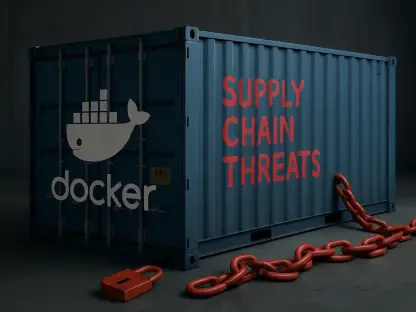In our modern digital age, businesses are besieged by a myriad of risks, including both man-made and natural calamities. Such disruptions can lead to operational standstills, data compromise, and tarnished reputations. To combat these challenges, a robust Business Continuity and Disaster Recovery (BCDR) strategy is indispensable. BCDR plays a pivotal role in bolstering a company’s resilience, allowing it to navigate changes and recover from setbacks swiftly while sustaining ongoing operations.Firms need to prepare for the unexpected with comprehensive planning that covers data integrity, system functionality, and the well-being of their workforce. This involves not just the implementation of strong cybersecurity measures but also preparation for natural disasters, which may not always be preventable but can be mitigated through foresight and planning. A sound BCDR plan ensures businesses can continue to serve customers and stakeholders without significant interruptions, even in the face of adversity.Additionally, by adopting a proactive stance on BCDR, organizations can minimize the long-term costs associated with downtime and rebuild more effectively post-disaster. Regularly updating and testing these strategies further helps organizations stay prepared for the ever-evolving threat landscape. In essence, BCDR is not just about survival in the immediate aftermath of a crisis but enabling a strategic path forward, ensuring longevity and sustainability in today’s volatile business environment.
1. Initiate the Change Process: Recognizing the Need for BCDR Planning
Acknowledging the possibility of changes and challenges is the foundational step in initiating a successful BCDR plan. Just as organizations routinely revisit and update their business strategies, they must also recognize the need for a robust security posture that includes BCDR planning. Organizational resilience hinges on the notion that change is inevitable, and preparedness to adapt to these changes minimizes operational impact. This proactive stance enables organizations to swiftly marshal resources and respond to disruptions without significant delays or losses.
2. Collect Details on the Proposed Change: Conducting a Thorough Analysis
Upon realizing the necessity for a robust Business Continuity and Disaster Recovery (BCDR) strategy, it’s critical to embark on a comprehensive assessment of proposed modifications. This entails a detailed examination of an organization’s essential operations, pinpointing possible risks and weaknesses that could disrupt those operations. The analysis must cover a deep understanding of the organization’s infrastructure, data interdependencies, and the potential impacts of any downtime on both the operational workflow and financial stability.Such a detailed investigation allows a business to craft a BCDR plan that isn’t simply a theoretical framework but one that is customized to the specific needs and hurdles of the business. It’s imperative for the strategy to be well-informed and primed for the real-world scenarios the business might face. Considering the consequences of not having such a plan could spell disaster in the event of an unforeseen interruption, the attention to detail and foresight during this planning phase could be what steers a company through tumultuous times without significant losses.In essence, a meticulously developed BCDR strategy becomes an insurance policy against potential future crises, ensuring that the organization remains resilient and can continue to operate effectively despite any challenges that may arise.
3. Evaluate the Suggested Change: Assessing BCDR Impact
Evaluating the proposed BCDR changes involves a multi-faceted assessment that considers both the direct and indirect implications of potential disruptions. It’s about understanding the criticality of different business functions and the tangible and intangible costs of downtime. This step is where businesses weigh the benefits of investment in BCDR against the risks of inadequate preparation. By doing so, organizations can prioritize resources, ensuring that the most critical areas are protected and that the BCDR plan aligns with the overarching business objectives for resilience and continuity.
4. Plan the Implementation: Strategizing BCDR Execution
After a thorough evaluation, the next step is to establish a concrete Business Continuity and Disaster Recovery (BCDR) strategy. This process involves drafting effective response measures and outlining clear communication strategies, as well as defining the specific duties each team member will assume in the event of a business disruption. The aim of this planning phase is to produce a detailed, easy-to-follow manual that ensures all relevant parties are prepared and informed. The developed plan acts as a crucial roadmap, guiding the organization through adverse situations and ensuring it can successfully recover from any crisis. Integral to this phase is the creation of a logical sequence of actions, ensuring a quick and efficient response to any unforeseen disruptions, ultimately enabling the organization to maintain operations or resume them as swiftly as possible post-event.
5. Execute the Change: Enacting the BCDR Strategy
Execution is the transformative phase where the BCDR strategy moves from the theoretical plane into action. It involves real-world testing of recovery procedures, employee training, and the establishment of communication channels. The execution of the BCDR plan must be meticulous, as it dictates how effectively an organization can bounce back from an adverse event. This phase also reinforces the plan’s viability and highlights areas that may need fine-tuning or additional resources.
6. Conclude the Process: Review and Closure
The review and closure phase serves as the critical evaluation point post-implementation. Organizations must dissect each stage of execution to identify successes and shortcomings. This phase provides a feedback loop to refine and enhance the BCDR strategy. Furthermore, formal closure of the process aligns with the ethos of continuous improvement, ensuring that the BCDR planning remains dynamic and evolves in tandem with the organization and the ever-changing threat landscape.In conclusion, BCDR planning is not just a requirement but a strategic asset for organizational resilience. It fortifies the business against interruptions, ensuring swift recovery and continuity of operations, which in turn safeguards the company’s reputation and financial stability. The judicious execution of BCDR planning steps provides a framework for resilience, preparing organizations to face challenges head-on and emerge unscathed.









